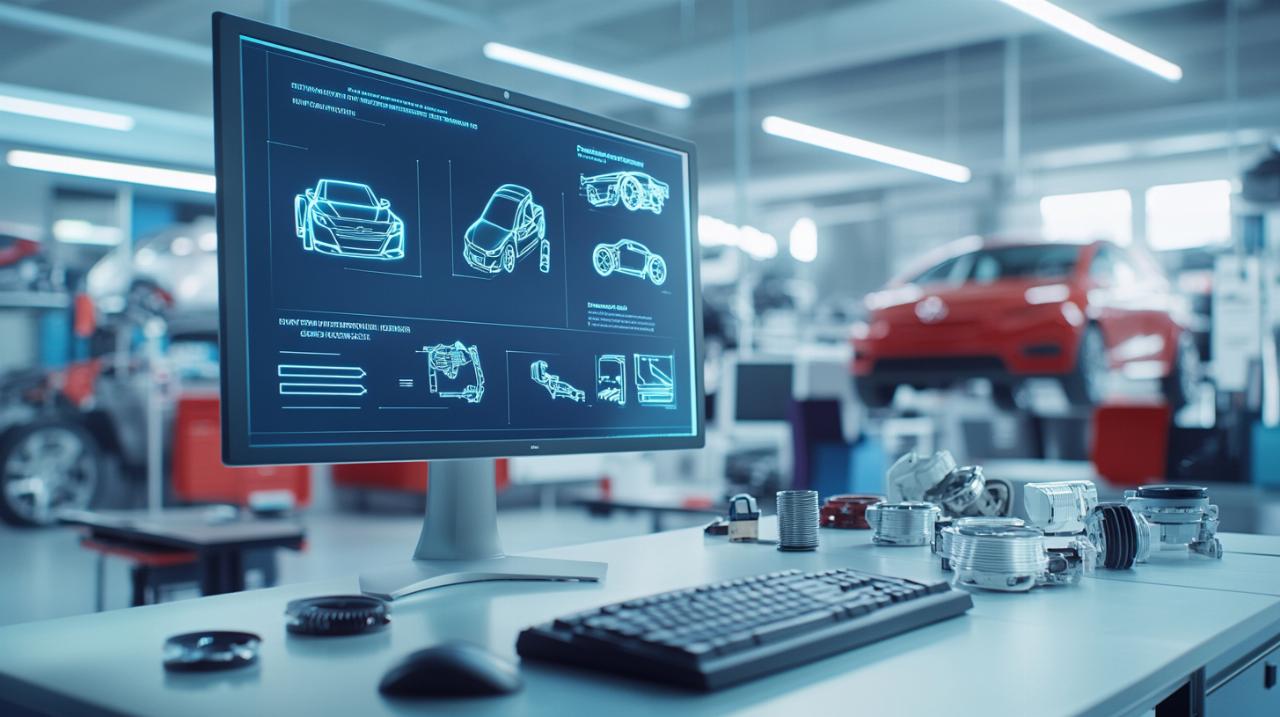Finding the right car body parts online can feel like navigating a maze, especially when you’re trying to balance cost with quality. Whether you’re repairing a minor dent or replacing a bumper after an unfortunate scrape, the internet offers a wealth of options that can save you both time and money. The key is knowing where to look and what to watch out for, ensuring that you don’t end up with subpar components that could compromise your vehicle’s safety or appearance. With a bit of savvy shopping and careful consideration, you can secure the parts you need without breaking the bank.
Research and compare prices across online motor factors
Before committing to a purchase, it’s essential to shop around and compare prices from various online motor factors. Websites such as Euro Car Parts, GSF Car Parts, and CarParts4Less offer extensive catalogues with competitive pricing, and taking the time to visit shopconnect.es can help you uncover additional deals and promotional codes that might not be immediately visible. Each retailer has its own pricing structure, delivery fees, and special offers, so a thorough comparison can reveal significant savings. Euro Car Parts, for instance, boasts a network of over 300 branches and employs more than 10,000 staff, often providing free delivery on qualifying orders. Meanwhile, GSF Car Parts offers free UK delivery on orders exceeding twenty-five pounds, and CarParts4Less provides price matching alongside free delivery for orders over thirty pounds. By leveraging these options, you can ensure you’re getting the best value for your money.
How to Effectively Compare Prices from Different Suppliers
Start by listing the specific parts you need, including the make, model, and year of your vehicle. This information is crucial for accurate searches and prevents costly mistakes. Once you have your list, visit multiple online retailers and input the same details to generate comparable results. Pay attention not only to the base price but also to shipping costs, expected delivery times, and any additional fees that might be tacked on at checkout. Some platforms, like Autodoc, operate across 27 European countries and stock over four million parts from 1400 brands, offering a vast selection that can be both a blessing and a challenge. Use comparison tools or spreadsheets to track prices side by side, noting any discounts or bundle offers that could tip the scales in favour of one supplier over another.
Spotting the Best Value for Money Deals
Value for money isn’t solely about the lowest price; it’s about balancing cost with quality, reliability, and customer service. Look for retailers that offer genuine OEM parts as well as reputable aftermarket alternatives. Customer reviews and ratings can provide invaluable insight into the quality of parts and the efficiency of the seller’s service. A retailer with a high Google Reviews score, such as 4.9, often indicates a track record of satisfied customers. Additionally, consider whether the supplier offers warranties or guarantees on their products. Free delivery, price matching, and easy returns policies are also indicators of a customer-focused business. By weighing these factors alongside the upfront cost, you can identify deals that deliver genuine value rather than simply appearing cheap.
Considering second-hand parts: a smart way to save money
Purchasing second-hand car body parts can be an excellent way to cut costs, particularly for older vehicles where new parts might be disproportionately expensive. Platforms like eBay feature a wide array of new and used components, allowing you to browse listings from individual sellers and commercial dealers alike. However, buying used requires a bit more caution and scrutiny to ensure you’re not sacrificing quality for savings. The appeal of second-hand parts lies in their affordability and availability, especially for models that are no longer in production. With a discerning eye and a little patience, you can find components in excellent condition at a fraction of the price of new ones.
What to check before purchasing used car body parts
When evaluating second-hand parts, inspect photos carefully and read descriptions thoroughly. Look for clear images from multiple angles, and don’t hesitate to request additional pictures if the listing is vague. Check for signs of rust, cracks, dents, or other damage that might affect the part’s functionality or appearance. Ask the seller about the part’s history, including the vehicle it was removed from and the reason for removal. Was it salvaged from a scrapped car, or is it simply surplus stock? Knowing the provenance can help you assess whether the part is likely to be in good nick. Additionally, confirm that the part matches your vehicle’s specifications, including model year and trim level, to avoid compatibility issues.
Where to find quality second-hand parts online
Beyond eBay, there are several online marketplaces and specialist breakers’ yards that offer used car body parts. Amazon also features a selection of pre-owned components, often with customer reviews that can guide your decision. Specialist forums and social media groups dedicated to specific makes and models can be treasure troves of information, with members frequently selling parts or recommending trusted sources. Additionally, some traditional motor factors, such as YMF Car Parts, which operates from six sites in the North of England, may stock reconditioned or refurbished parts that offer a middle ground between new and used. These parts have often been inspected and tested, providing an extra layer of assurance compared to purely second-hand items.
Taking Advantage of Sales and Special Offers
Timing your purchase to coincide with sales and special offers can lead to substantial savings. Many online retailers run seasonal promotions, clearance sales, and flash discounts that can significantly reduce the cost of car body parts. Keeping an eye on these opportunities requires a bit of planning and vigilance, but the payoff can be well worth the effort. Whether it’s a bank holiday sale or an end-of-season clearance, these events provide a chance to snag high-quality parts at reduced prices.
When to Look for the Best Discounts and Promotions
Major sales events typically occur around public holidays, such as Black Friday, Cyber Monday, and the Boxing Day sales. Additionally, many retailers offer discounts at the start of the new year to clear out old stock. Pay attention to the automotive calendar as well; for example, some suppliers may offer promotions tied to the launch of new vehicle models or the start of the MOT season. Mid-year sales in July and August are also common, as retailers aim to boost sales during traditionally quieter periods. By planning your repairs or upgrades around these times, you can take advantage of discounts that might not be available at other times of the year.
Signing Up for Newsletters to Catch Exclusive Deals
Subscribing to newsletters from your favourite online motor factors is a simple yet effective way to stay informed about upcoming sales and exclusive offers. Many retailers reward their mailing list subscribers with early access to discounts, special promotional codes, and members-only deals. For instance, platforms like Mister Auto, which stocks over a million parts and serves 5.5 million customers, often send out targeted promotions to their subscribers. These emails can alert you to limited-time offers that you might otherwise miss. Just be sure to manage your subscriptions to avoid inbox clutter, and consider setting up a dedicated email address for such communications if you sign up to multiple retailers.
Understanding Terms and Conditions Before Making a Purchase

Before clicking that final checkout button, it’s crucial to familiarise yourself with the seller’s terms and conditions. These documents outline your rights and responsibilities as a buyer, including the procedures for returns, exchanges, and refunds. Skipping this step can lead to unpleasant surprises if the part doesn’t fit or fails to meet your expectations. A reputable dealer will have clear, fair policies that protect both parties, so take the time to read the fine print.
Why the returns policy matters when buying online
A robust returns policy is your safety net when buying car parts online. Even with meticulous research, there’s always a chance that the part might not be suitable for your vehicle or might arrive damaged. A flexible returns policy allows you to send the item back within a specified period, usually 14 to 30 days, for a refund or exchange. Check whether the seller covers the cost of return postage or if that expense falls on you. Some retailers, particularly those with high customer satisfaction ratings, offer free returns as part of their service. This can make a significant difference if you need to send back a heavy or bulky item like a bonnet or a bumper. Ensure you understand any conditions attached to the returns policy, such as the requirement that the part must be unused and in its original packaging.
Key Terms to Look for in the Fine Print
Beyond the returns policy, pay attention to other key terms that could affect your purchase. Look for information about warranties or guarantees, which can provide peace of mind regarding the quality and durability of the part. Check the estimated delivery times and whether the seller offers tracking for shipments. Some online motor factors provide options for click and collect, allowing you to pick up your order from a local branch and potentially saving on delivery charges. Be aware of any restocking fees or administrative charges that might apply if you return an item. Understanding these details upfront can help you avoid unexpected costs and ensure a smoother transaction.
Ensuring Quality and Proper Fitment for Your Vehicle
Purchasing the right part at a great price is only half the battle; ensuring that it fits your vehicle correctly and meets quality standards is equally important. A mismatched or substandard component can lead to poor performance, safety issues, or even further damage to your car. Taking the time to verify compatibility and quality before buying can save you from costly mistakes and dodgy repairs down the line.
How to verify parts match your car’s specifications
The most reliable way to ensure a part fits your vehicle is to use your car’s Vehicle Identification Number, commonly known as the VIN. This unique code provides precise details about your vehicle’s make, model, year, and specifications, allowing online retailers to filter their catalogues and present only compatible parts. Most reputable websites, including Autodoc and Onlinecarparts, offer search functions that accept VIN input or allow you to search by make, model, and year. Double-check the part number provided by the seller against your vehicle’s manual or the existing component to confirm compatibility. If you’re unsure, many retailers have customer service teams or helplines, such as the one reachable at 800-255-89737, where knowledgeable staff can assist you in finding the correct part.
Avoiding common mistakes that lead to dodgy repairs
One of the most frequent errors is assuming that all parts labelled for a particular make and model will fit every variant. Differences in trim levels, engine sizes, and production years can result in subtle but crucial variations in components. Always verify the exact specifications before purchasing. Another pitfall is opting for the cheapest part without considering its origin or quality. While aftermarket parts can offer excellent value, not all are created equal. Research the brand and read customer reviews to gauge reliability. Additionally, avoid rushing the purchase. Take the time to confirm measurements, check fitment guides, and consult forums or expert advice if needed. A little diligence at this stage can prevent the frustration of receiving a part that doesn’t fit or fails prematurely.
Checking seller credentials and customer feedback
In the digital marketplace, the credibility of the seller is just as important as the quality of the parts they sell. With countless options available online, distinguishing between reputable dealers and unreliable characters can be challenging. Verifying seller credentials and reading customer feedback are essential steps in ensuring a positive buying experience.
Reading reviews to avoid unreliable sellers
Customer reviews offer a window into the experiences of previous buyers and can highlight both the strengths and weaknesses of a seller. Look for reviews on the retailer’s website as well as independent platforms like Trustpilot or Google Reviews. A high rating, such as a score of 4.9, generally indicates consistent customer satisfaction. Pay attention to recurring themes in the feedback. Are customers praising the speed of delivery and the quality of parts, or are there complaints about poor communication and defective products? Negative reviews aren’t necessarily a deal-breaker, but consider how the seller responds to criticism. A company that addresses complaints professionally and offers solutions demonstrates a commitment to customer service. Be wary of sellers with very few reviews or suspiciously uniform positive feedback, as these could be red flags.
Verifying seller credentials and certifications
Reputable online motor factors often display certifications or affiliations with industry bodies, which can provide additional assurance of their legitimacy. Look for secure payment options, such as encryption and recognised payment gateways, which protect your financial information during transactions. Established retailers like Euro Car Parts and GSF Car Parts have physical branches and a long-standing presence in the market, which adds an extra layer of trust. Check whether the website provides clear contact information, including a phone number and physical address. A transparent approach to communication suggests a business that stands behind its products and services. If a seller is reluctant to provide details or has a sparse online presence, it’s worth proceeding with caution or seeking alternatives.





